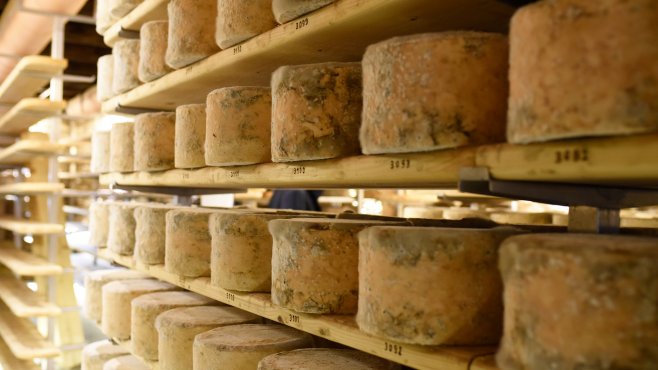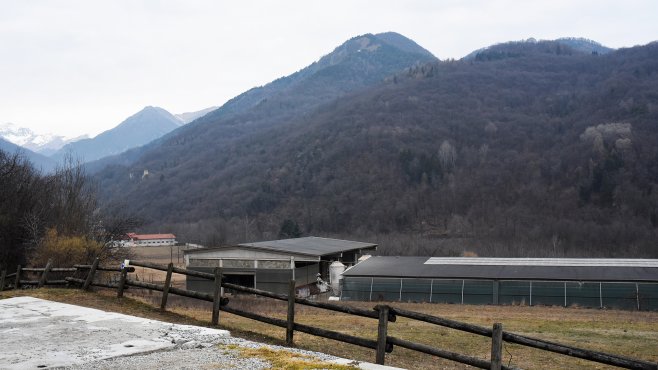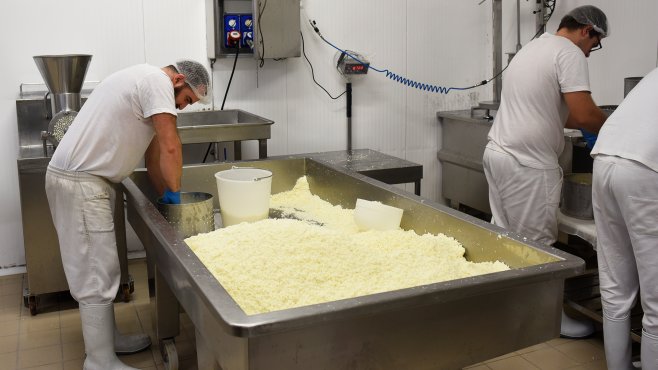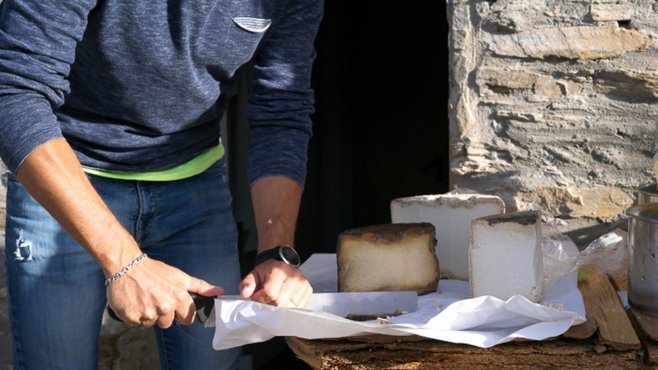Castelmagno
region: Piedmont | production: year-round | aging: 60 days | form: 2–7 kg | pasteurization: no
Castelmagno cheese has been produced in a small mountainous area between the villages of Castelmagno, Pradleves, and Monterosso Grana since at least 1277. It has a characteristic crumbly texture, caused by a specific five-day production process. Full-fat, unpasteurized cow's milk from morning and evening milking is coagulated with natural rennet into curd, which is then broken into pieces the size of a corn kernel. It is filled into molds and left to rest. Then the curd is broken again and re-packed into molds. This is followed by at least two months of aging, during which the surface is covered with noble mold.
In addition to the year-round available variant, a limited amount of Castelmagno d'Alpeggio is also released in the fall, made exclusively from summer high-altitude milk from pastures at 2,000 meters above sea level. Both types are protected by the DOP designation of origin, and each form is marked with a stylized letter C.
Castelmagno has a pronounced animal flavor with herbal tones, which becomes more piquant as it matures. It pairs excellently with honey, forest fruit jam, and full-bodied red wines like Barbaresco or Barolo, and its crumbly texture is great for flavoring gnocchi or risotto.
Manufacturer: Tino Paiolo



